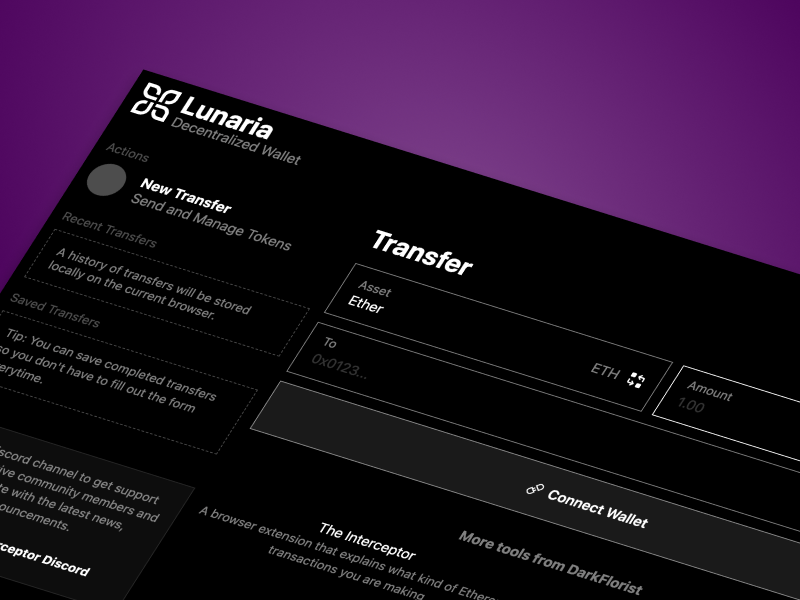Introduction
Web3 development can feel like a maze—especially when you’re dealing with real assets and the stakes are high. With Lunaria, I set out to build a decentralized application that puts asset safety and user trust at the forefront. This project is the result of a close collaboration with the team at Dark Florist, who are deeply committed to decentralization and guided the project’s direction from day one.
Why Lunaria? Why Decentralization?
In a world where digital assets are becoming more valuable, ensuring their safety and accessibility is critical. Lunaria was designed to be a robust, open source solution for managing and interacting with crypto assets—no shortcuts, no compromises. Every line of code is human-written and reviewed by top developers to make sure users’ hard-earned money is never put at risk.
The Real Challenges: Frontend Web3 & IPFS
Building a secure, decentralized frontend comes with unique challenges:
- Wallet integration isn’t just a button. It means handling network changes, user onboarding, and all sorts of edge cases—because every interaction could involve real value.
- IPFS storage is powerful, but it’s not as simple as uploading to S3. You need to think about pinning, gateways, and making sure files are actually retrievable and safe.
A few things that stood out:
- Wallet connection flows must be clear and robust—users can’t afford to get lost.
- IPFS is excellent for decentralized storage, but persistence and access speed are real concerns.
- Debugging web3 is a different beast: browser extensions, network issues, and contract errors all blend together.
Tech Stack
Lunaria is built with a focus on reliability and transparency:
- Preact (Lightweight React) + TypeScript for the frontend
- EthersJS for wallet and blockchain integration
- IPFS HTTP client for decentralized storage
- All code is human-coded and validated by experienced web3 developers—no code generators, no shortcuts.
Lunaria + TheInterceptor
Lunaria is designed to work hand-in-hand with other Dark Florist offerings, like TheInterceptor. TheInterceptor intercepts transactions from any dApp to provide transaction simulation, security and visualization for transactions; provided the dApp is decentralized, and surprisingly there’s very few, if not any out there. Lunaria bridges that gap by exposing a verifyable transaction through EIP-1193 standards via window.ethereum, that tools like TheInterceptor can capture to gain valuable insights. Together, these tools form a more complete ecosystem for anyone serious about web3 security and usability.
Open Source & Community
Lunaria is open source—check out the code on GitHub. I’m grateful to the Dark Florist team for their vision and commitment to decentralization. If you’re passionate about secure, decentralized tech, I’d love to connect!
Conclusion
Building Lunaria was a deep dive into the realities of web3, where security and decentralization aren’t just buzzwords—they’re requirements. If you’re interested in building for the decentralized future, I encourage you to explore the code, try Lunaria, and join the conversation.
Want to chat about web3 or open source? Send me a line
